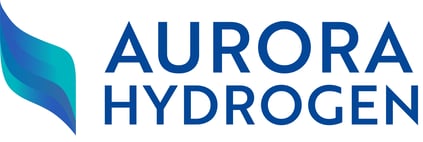Hydrogen Produced from Methane Pyrolysis: Key Considerations for Investors

As we look to a net-zero future, we believe that clean hydrogen is a promising energy source. Traditionally hard-to-abate sectors, such as steel, petrochemicals, shipping, trucking and aviation, cannot easily be electrified. These sectors make up 30 to 35 percent of global emissions and still need commercially viable, economically feasible low carbon solutions. Clean hydrogen has the potential to decarbonize these industries.
But current approaches to hydrogen production raise challenges either in the form of high carbon pollution or by creating sustainability tradeoffs.
In this blog we present the potential of hydrogen produced via methane pyrolysis to bridge those gaps and create a viable alternative in terms of cost, scale, and carbon output.
What is methane pyrolysis?
Methane pyrolysis is the process in which thermal energy is applied to methane (CH₄) to break the chemical bond between carbon and hydrogen, generating hydrogen gas and a solid carbon product with no CO2 emissions. (Only a small portion of methane remains unreacted depending on the reactor's efficiency).
The case for methane pyrolysis.
- It’s less polluting than other large scale methods, and can be made with zero emissions. Hydrogen production comes classified in many colors, with each representing a different way the fuel is produced. Other methods, such as those used to produce Blue and Gray hydrogen, have significant drawbacks in that they produce as much as 10 times as much carbon dioxide as hydrogen in the manufacturing process. Although carbon capture can reduce these emissions, the technology is not available everywhere and significantly increases overall energy consumption.
.png?width=800&height=500&name=323hydrogencolors%20(1).png)
For methane pyrolysis, the Pacific Northwest National Laboratory projects a decrease in carbon dioxide emissions by 85 percent or more (roughly 1.5kg CO2e/kg H2), depending on how the process is heated — for example, burning some of the produced hydrogen, or using renewable electricity as a heat source, will result in zero emissions. - It’s less energy intensive than current methods, even green hydrogen. Although green hydrogen (where the fuel is produced using renewable electricity) has the potential to become a long-term solution, it must first represent a low product and transition cost for industry.
Green hydrogen also requires vast amounts of energy to conduct the electrolysis necessary to split water into hydrogen and oxygen. One methane pyrolysis method can produce hydrogen using eight times less energy than is used in green hydrogen. This is an important consideration when assessing energy needs and where renewable power should be deployed.
- It's an efficient use for otherwise-polluting methane.
Methane currently accounts for roughly 20 percent of global greenhouse gas emissions, and although it is more short-lived in our atmosphere than carbon dioxide, its heating effects are 25 times more pronounced.
Methane capture from oil and gas sites, livestock farms, and landfills has not seen widespread adoption (but recent high natural gas prices have incentivized actors to consider capturing — and burning — methane). By reconstituting this polluting gas into a useful hydrogen fuel, methane pyrolysis can both redirect methane away from the atmosphere and incentivize its capture for cleaner use. - It’s rampable/scalable with renewables.
If methane pyrolysis is generated using microwaves (see the Aurora Hydrogen case study below) the hydrogen fuel can be generated immediately with no heat up/ramp up times, allowing it to scale with a future grid powered by intermittent renewable energy sources. This feature of microwave-enabled methane pyrolysis allows for reliable hydrogen generation on a future grid, as well as the potential to provide clean back up power generation should the need arise.
- Its byproduct, carbon black, is a valuable product.
Methane pyrolysis produces two things: Hydrogen and a solid carbon product known as carbon black. Carbon black is widely used in manufacturing tires, plastics, mechanical rubber goods, printing inks, and toners. It also has strong insulative properties and is used to insulate wires and cables.
The global market for carbon black is projected to grow from $13.22 billion in 2022 to $18.09 billion by 2029. The current source for carbon black is from the thermal decomposition of raw, heavy petroleum material, such as ethylene cracking, coal tar, or fluid catalytic cracking tar and has an emissions intensity of 3.3 kg CO2/kg of carbon black produced. This is more than double the projected emissions from methane pyrolysis.
Several pyrolysis companies also claim the ability to produce various forms of carbon nanotube products, which are of extreme value and offer diverse use cases across the electronics and chemical industries. The global carbon nanotubes market size was valued at $38.54 billion in 2022 and it is projected to be worth around $105 billion by 2030.
Challenges.
Steam methane reforming is more efficient than methane pyrolysis. Other forms of hydrogen production using steam methane reforming, while carbon intensive, are more efficient than methane pyrolysis — but only to a point. While it's true that steam methane reforming is much more efficient than methane pyrolysis in and of itself (75 percent vs 58 percent) this margin evaporates when carbon capture and sequestration are added to the process (60 percent vs 58 percent).
Methane pyrolysis is more advantageous when looking at standard reaction enthalpies. 37.7 kJ/moleH2 is needed for methane pyrolysis, whereas steam methane reforming requires 41.4 kJ/moleH2. When taking into consideration the heat required to evaporate the water in steam methane reforming, this requirement rises to 63.4 kJ/moleH2.
Steam methane production is cheaper … for now. Current estimates (depending on the cost of carbon) put the cost of hydrogen from methane pyrolysis at $2,600 to $3,200 per ton of hydrogen, as compared to steam methane reforming, which is around $2,000 per ton. This is a highly mobile estimate that will be drastically impacted by the recent Inflation Reduction Act bill passed in the United States.
To scale methane pyrolysis, natural gas is needed. The implementation of methane pyrolysis on an industrial scale requires the use of natural gas as a feed gas instead of pure methane. Research is usually limited to the use of methane as a single component, and the challenges associated with performing the operation with natural gas are not addressed in depth.
The first issue to be explained is how the minor components of natural gas can affect the catalytic activity and stability. Some of these impurities include ethane, propane, ethylene, H2S, CO2, and nitrogen. Experiments with mixtures simulating a natural gas composition (85 percent methane, 10 percent ethane, 5 percent propane) have been carried out at 900°C over carbon catalysts. The resulting gas product is only composed of unconverted methane and hydrogen, indicating the complete conversion of ethane and propane, and the prevention of secondary gaseous products.
This is important as methane pyrolysis will not use a pure methane stream, but rather a natural gas stream which is composed of several other gases as mentioned above. It is key to ensure that the process can break down these other species in the feedstock and prevent emission of potentially hazardous gases due to this hydrogen generation process.
Methane pyrolysis in practice: Aurora Hydrogen
Though there are alternative approaches to generating hydrogen via methane pyrolysis, Third Derivative portfolio company, Aurora Hydrogen, has pioneered a way to produce the fuel using efficient microwave energy.
Aurora Hydrogen’s technology is considered a Direct Mitigation Measure (DMM), with the potential to offset the equivalent of 10 gigatons of CO2 in global emissions. (See how we measure climate impact here).

Direct heating of the carbon product with microwaves is both energy efficient and loses little heat as the carbon is directly heated to pyrolyze the natural gas. Its technology ramps with a renewable grid and is 30 percent less electricity intensive than conventional molten metal pyrolysis. Aurora Hydrogen’s approach is even better than conventional methane pyrolysis as it is targeting less than 37.7 kJ/moleH2. To put that into perspective, green hydrogen requires around 285.8 kJ/moleH2.
Aurora Hydrogen’s technology is modular, scalable, and does not require new pipelines, which makes its projected costs the lowest of any hydrogen production method. Using 80 percent less electricity and lower overall climate impact than water electrolysis, Aurora Hydrogen uses no plasma or catalyst, producing pure elemental carbon (carbon black).
In early 2022, Aurora Hydrogen was at Technology Readiness Level 5 (bench scale) with continuous production at 1kg H2/day. During bench scale testing, Aurora Hydrogen was able to achieve greater than 99 percent single-pass methane to hydrogen conversion, which was higher than expected.
Additionally, it created a unique, granular, sand-like carbon particle that they believe will have much wider uses than the carbon black typically produced by methane pyrolysis processes. For example, they believe these carbon particles can be used in graphene production, steelmaking, construction aggregate, and as a carbon sequestration medium.
Aurora Hydrogen aims to be at Technology Readiness Level 8-10 by the end of 2023 with a demo plant (capable of producing 200kg H2/day) expected to come online the same year.
Key considerations for investors
As we have seen from its overall promise as well as its success in an applied setting with Aurora Hydrogen, hydrogen production via methane pyrolysis should be given strong consideration by prospective investors and governments as a low-carbon (and potentially zero-carbon) route to reliable hydrogen generation.
This method comes with a compelling value proposition: it can displace conventional production of hydrogen while leveraging existing infrastructure, generating diverse revenue streams, and potentially linking to the chemicals space.
The technological challenges of many green hydrogen technologies remain a barrier to scaling these solutions to the gigaton scale, so it is our opinion that those looking to invest in the hydrogen marketplace should look to an efficient — and if powered appropriately — clean option in methane pyrolysis.
For startups interested in bringing your solutions to market faster, apply to join Third Derivative's latest 18-month, remote cohort.
